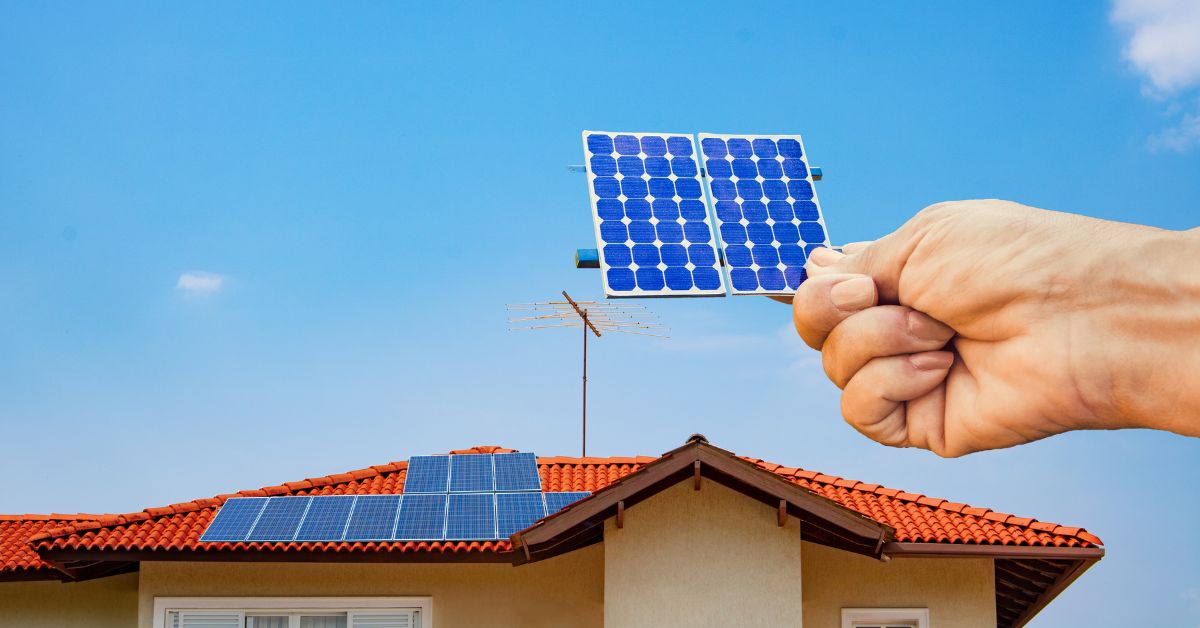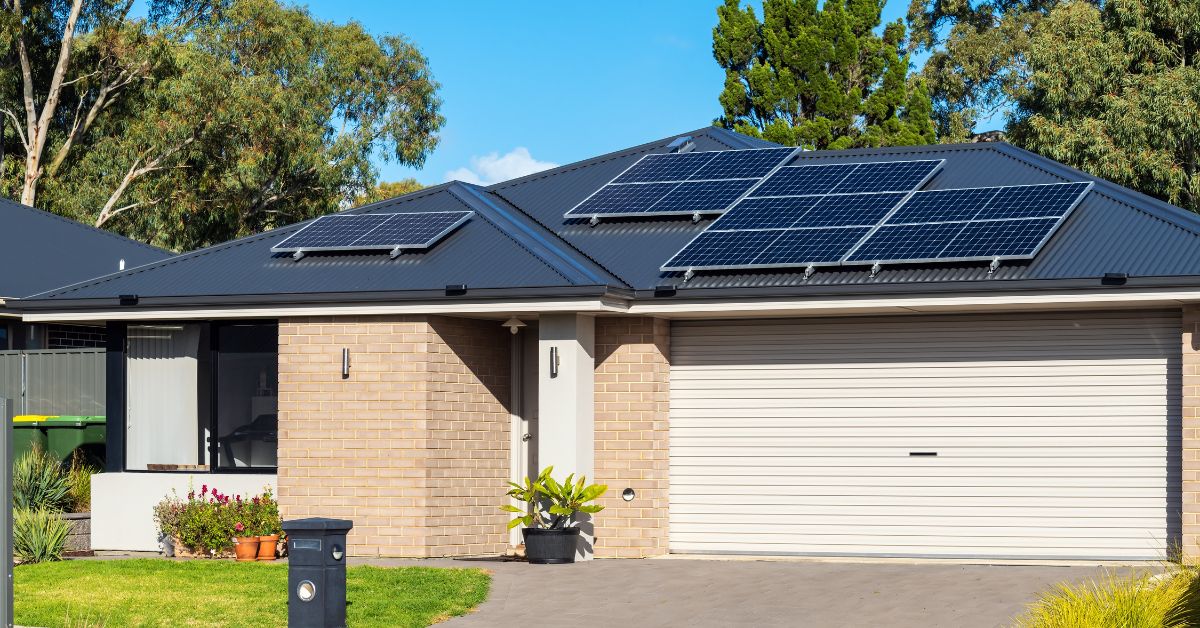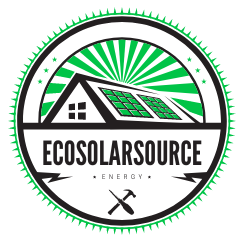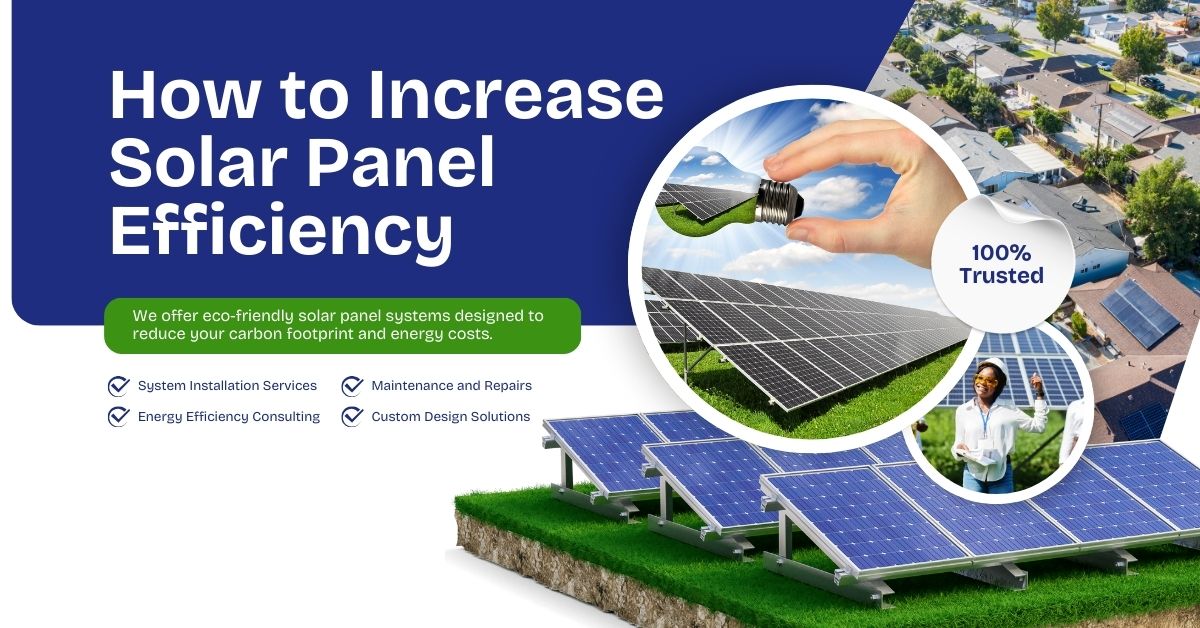How to Increase Solar Panel Efficiency
How to increase solar panel efficiency, and optimize the tilt and orientation of the panels to maximize exposure to sunlight throughout the day. Regularly clean the panels to remove dust, debris, or snow that may obstruct sunlight.
Invest in high-quality photovoltaic (PV) cells, such as monocrystalline panels, which offer higher efficiency than polycrystalline types. Utilize solar trackers that adjust panel positioning as the sun moves, ensuring consistent solar energy absorption. Additionally, install a cooling system to prevent overheating, as excessive heat can reduce efficiency. Pairing solar panels with energy storage systems can also enhance overall performance and reduce power loss.
How to Increase Solar Panel Efficiency
Table of Contents:
- Introduction
- The Importance of Solar Panel Efficiency
- Factors Influencing Solar Panel Efficiency
- Choosing the Right Solar Panels
- Types of Solar Panels and Their Efficiency
- Monocrystalline
- Polycrystalline
- Thin-Film Solar Panels
- How to Select the Best Panels for Efficiency
- Types of Solar Panels and Their Efficiency
- Solar Panel Orientation and Tilt
- The Impact of Panel Orientation on Efficiency
- Determining the Optimal Tilt Angle for Maximum Output
- Maintenance for Maximizing Efficiency
- Cleaning the Solar Panels
- Removing Dust, Debris, and Snow
- Regular Inspection and Maintenance
- Inverter Efficiency
- How Inverters Affect Solar Panel Performance
- Choosing High-Efficiency Inverters
- Temperature and Cooling Solutions
- The Effect of Heat on Solar Panel Efficiency
- Cooling Techniques to Improve Performance
- Maximizing Sunlight Exposure
- Positioning to Avoid Shading
- Seasonal Adjustments and Tracking Systems
- Advanced Technologies to Boost Efficiency
- Bifacial Solar Panels
- Solar Concentrators
- Anti-Reflective Coatings
- Energy Storage and Battery Solutions
- How Batteries Enhance Solar Panel Efficiency
- Choosing the Right Battery Type for Your Solar Setup
- Smart Solar Monitoring Systems
- Real-Time Data and Optimization
- The Role of Smart Monitoring in Improving Efficiency
- Government Incentives and Policies
- How to Leverage Incentives for Better ROI
- Regulations that Promote Efficient Solar Installations
- Future Trends in Solar Efficiency
- Innovations on the Horizon
- Long-Term Outlook for Solar Technology Efficiency
- Frequently Asked Questions (FAQs) About How to Increase Solar Panel Efficiency
- Conclusion
- Final Thoughts on Maximizing Solar Panel Efficiency
Introduction
The Importance of Solar Panel Efficiency
Solar energy has become one of the most popular renewable energy sources worldwide due to its environmental benefits and the increasing efficiency of solar technologies. The Solar panel efficiency refers to the ability of the panels to convert sunlight into usable electricity. The higher the efficiency, the more energy the panel can generate from the same amount of the sun, making it a critical factor in determining the effectiveness of a solar energy system.

Solar panel efficiency is essential for several reasons:
- Maximizing ROI: More efficient solar panels generate more electricity, which leads to greater energy savings over time.
- Reducing Installation Costs: By increasing the efficiency of panels, fewer panels are required to generate the same amount of electricity, reducing the overall installation cost.
- Making the Most of Limited Space: Higher efficiency panels are ideal for homes or businesses with limited roof space.
Factors Influencing Solar Panel Efficiency
Several factors affect how efficiently a solar panel converts sunlight into electricity. These include:
- The type of solar cells used
- The quality of materials
- The angle and orientation of the panels
- Environmental conditions such as temperature and shading
- The maintenance and care of the panels By addressing these factors, solar panel owners can significantly improve the performance of their solar systems.
Choosing the Right Solar Panels
Types of Solar Panels and Their Efficiency
Not all the solar panels are created equal. There are different types of panels, each with its own efficiency levels. Here’s an overview of the most common types:
Monocrystalline Solar Panels
Monocrystalline panels are the most efficient type of solar panel currently available, with 15-22% efficiency ratings. They are made from high-quality silicon and are known for their high energy output and longevity. Although they are more expensive than other types of panels, they are an excellent choice for maximizing efficiency, especially in limited space.
Polycrystalline Solar Panels
Polycrystalline panels are slightly less efficient than monocrystalline panels, with 13-18% efficiency ratings. They are made from silicon fragments and have a less uniform appearance. While they are more affordable, they are less efficient in converting sunlight into electricity, making them less ideal for areas with space limitations.
Thin-Film Solar Panels
Thin-film panels are the least efficient, with ratings typically between 10-12%. These panels are flexible and lightweight, making them suitable for specific applications where flexibility is more critical than efficiency, such as portable solar chargers. However, their low efficiency means they require more space to generate the same amount of electricity as crystalline panels.
How to Select the Best Panels for Efficiency
When selecting solar panels for efficiency, it’s essential to consider the specific needs of your installation. Monocrystalline panels are best suited for maximizing efficiency in limited space, while polycrystalline or thin-film panels may be more appropriate in areas where space isn’t a concern. Always consider the manufacturer’s reputation, warranty, and panel degradation rate when choosing the most efficient solar panels.
Solar Panel Orientation and Tilt
The Impact of Panel Orientation on Efficiency
The orientation of your solar panels plays a critical role in their efficiency. Solar panels should face in the direction that receives the most sunlight throughout the day. For installations in the northern hemisphere, this typically means positioning panels to face south, while in the southern hemisphere, they should face north. Deviating from these ideal orientations can lead to a significant drop in energy production.
Determining the Optimal Tilt Angle for Maximum Output
The tilt angle of the solar panels also affects their performance. The optimal angle depends on your geographic location and the time of year. Panels should generally be tilted at an angle equal to your latitude to maximize efficiency. Additionally, some solar panel systems use adjustable mounts or tracking systems to optimize the angle seasonally, ensuring that the panels capture the maximum amount of sunlight year-round.
Maintenance for Maximizing Efficiency
Cleaning the Solar Panels
Dirt, dust, bird droppings, and other debris can accumulate on the surface of solar panels, blocking sunlight and reducing efficiency. Regular cleaning is necessary to maintain peak performance. In areas with heavy pollution or pollen, panels may need to be cleaned more frequently to prevent a noticeable drop in efficiency.
Removing Dust, Debris, and Snow
Dust and snow buildup can significantly reduce the amount of sunlight reaching the solar cells. In snowy regions, clearing snow off the panels as quickly as possible ensures that the system can resume producing electricity. Installing panels at a steeper tilt can also help snow slide off more easily.
Regular Inspection and Maintenance
Routine inspections help identify potential issues such as cracks, corrosion, or wiring problems that can reduce the efficiency of a solar panel system. Scheduling professional maintenance once or twice a year ensures that your system operates at peak efficiency.
Inverter Efficiency
How Inverters Affect Solar Panel Performance
The efficiency of the inverter, which converts the direct current (DC) generated by solar panels into alternating current (AC) used by most homes and businesses, is crucial for overall system efficiency. If the inverter is not operating efficiently, a significant portion of the electricity generated by the panels can be lost during conversion.
Choosing High-Efficiency Inverters
Look for inverters with high conversion efficiency ratings (above 95%) to ensure minimal energy loss. String inverters, microinverters, and power optimizers are common options. Microinverters and power optimizers can improve efficiency by optimizing the output of each panel individually, reducing losses from shading or orientation issues.
Temperature and Cooling Solutions
The Effect of Heat on Solar Panel Efficiency
While solar panels are designed to capture sunlight, they become less efficient as temperatures rise. For every degree above 25°C (77°F), solar panel efficiency drops by approximately 0.25-0.5%. This means that in hot climates, high temperatures can significantly reduce the energy output of solar panels.

Cooling Techniques to Improve Performance
To mitigate the effects of heat, consider the following cooling strategies:
- Installing Panels with Adequate Airflow: Elevating panels slightly above the roof allows for better air circulation, reducing overheating.
- Using Reflective Roofing Materials: Reflective roofs help reduce the amount of heat absorbed by the building, keeping the panels cooler.
- Active Cooling Solutions: In high-temperature areas, water or air cooling systems can be installed to help lower the temperature of the panels, though this adds complexity and cost to the system.
Maximizing Sunlight Exposure
Positioning to Avoid Shading
Shading is one of the biggest enemies of the solar panel efficiency. Even a small amount of shading on a portion of a panel can dramatically reduce its output. Positioning panels to avoid shadows from trees, buildings, or other obstacles is essential for maintaining high efficiency.
Seasonal Adjustments and Tracking Systems
Tracking systems can improve solar panel efficiency by adjusting the position of the panels throughout the day to follow the sun’s movement. While more expensive, these systems ensure that the panels capture the maximum amount of sunlight, increasing energy output by 20-30%. Similarly, adjusting the panel tilt seasonally can help optimize performance, particularly in areas with distinct seasons.
Advanced Technologies to Boost Efficiency
Bifacial Solar Panels
Bifacial solar panels capture sunlight on both sides, allowing them to generate more electricity than traditional monofacial panels. They are particularly effective in locations with highly reflective surfaces, such as snow-covered ground or reflective roofing materials.
Solar Concentrators
Solar concentrators use mirrors or lenses to focus sunlight onto a small area of the panel, increasing the amount of energy that can be captured. While this technology can significantly boost efficiency, it also requires precise alignment and can be more expensive to implement.
Anti-Reflective Coatings
Applying anti-reflective coatings to the surface of solar panels can reduce the amount of sunlight that is reflected away from the panel and increase the amount of energy absorbed. This simple addition can boost panel efficiency by 2-3%.
Energy Storage and Battery Solutions
How Batteries Enhance Solar Panel Efficiency
Energy storage systems, such as solar batteries, help maximize the efficiency of a solar energy system by storing excess electricity generated during the day for use at night or during cloudy periods. This reduces reliance on the grid and ensures that none of the energy produced by the panels is wasted.
Choosing the Right Battery Type for Your Solar Setup
Several battery types are available, including lithium-ion, lead-acid, and flow batteries. Lithium-ion batteries are the most efficient and have the longest lifespan, making them the best choice for most residential and commercial solar systems. Flow batteries, while more expensive, offer advantages in large-scale applications where long-term storage is required.
Smart Solar Monitoring Systems
Real-Time Data and Optimization
Smart monitoring systems track the performance of your solar panels in real time, allowing you to identify inefficiencies and troubleshoot issues before they become significant problems. These systems can also optimize energy production by adjusting settings based on weather conditions or usage patterns.
The Role of Smart Monitoring in Improving Efficiency
By providing detailed insights into the performance of individual panels, smart monitoring systems can help identify areas where efficiency improvements can be made, such as cleaning or reorienting panels. Some systems also offer automatic adjustments to improve performance based on environmental factors.
Government Incentives and Policies
How to Leverage Incentives for Better ROI
Many governments offers incentives for installing the solar panels, such as tax credits, rebates, and feed-in tariffs. These incentives can reduce the upfront cost of installing solar panels, allowing you to invest in more efficient systems that deliver a better return on investment.
Regulations that Promote Efficient Solar Installations
In some regions, building codes and regulations are in place to ensure that solar panel installations meet specific efficiency standards. Familiarizing yourself with these policies can help ensure that your solar system is installed correctly and performs optimally.
Future Trends in Solar Efficiency
Innovations on the Horizon
Several cutting-edge technologies are being developed to further enhance solar panel efficiency. These include:

- Perovskite Solar Cells: A promising technology that could significantly boost efficiency while reducing manufacturing costs.
- Quantum Dot Solar Cells: A new type of cell that uses nanotechnology to capture a broader spectrum of light, potentially increasing efficiency by 50% or more.
- Organic Solar Cells: Lightweight and flexible, organic solar cells could offer new applications for solar technology, although their efficiency is currently lower than traditional cells.
Long-Term Outlook for Solar Technology Efficiency
As research and development continue, solar panel efficiency is expected to keep improving, making solar energy an even more attractive option for homeowners and businesses. Innovations such as bifacial panels, smart monitoring systems, and advanced cell technologies will likely drive the next wave of efficiency gains.
Frequently Asked Questions (FAQs) About How to Increase Solar Panel Efficiency
1. What are the most effective ways to maintain the cleanliness of solar panels for better efficiency?
- Dust, dirt, and debris can block sunlight, so regular cleaning of panels is crucial. What are the best practices and cleaning tools for maintaining optimal performance?
2. How do the angle and orientation of solar panels affect their efficiency?
- What are the ideal angles and orientations for solar panels depending on geographic location, and how can adjusting these factors improve energy capture?
3. Do solar tracking systems significantly improve panel efficiency?
- How do solar tracking systems, which adjust panel position relative to the sun, enhance energy generation compared to stationary systems?
4. How does temperature impact the performance of solar panels, and what can be done to mitigate overheating?
- While solar panels work with sunlight, excessive heat can reduce efficiency. What techniques can be used to cool panels or minimize temperature effects?
5. What role does inverter efficiency play in overall solar panel performance?
- Inverters convert the electricity generated by solar panels into usable power. How does optimizing inverter efficiency impact the overall energy output?
6. Can adding energy storage (e.g., batteries) increase solar panel efficiency in practical terms?
- Does adding energy storage solutions like batteries help in maximizing the use of generated solar energy, or does it just enhance energy management?
7. What type of solar panel technology (monocrystalline, polycrystalline, thin-film) provides the best efficiency in different conditions?
- How do different types of solar panels compare in terms of efficiency, and how do they perform under various weather and lighting conditions?
8. How does shading affect solar panel efficiency, and what are the best strategies to minimize its impact?
- Can partial shading on a solar panel array significantly reduce power output? What are some solutions like bypass diodes or microinverters that can help mitigate shading losses?
9. Are there any innovative coatings or materials that can enhance the efficiency of solar panels?
- What are the latest advancements in anti-reflective coatings or self-cleaning surfaces that can help solar panels capture more sunlight and maintain performance?
10. How often should solar panels be inspected, and what signs indicate that their efficiency might be declining?
- What are the key indicators that your solar panels may need maintenance or replacement, and how frequently should you inspect them to ensure optimal performance?
Conclusion
Maximizing the efficiency of solar panels is crucial for getting the most out of your investment in renewable energy. By carefully selecting the right type of panels, optimizing their orientation and tilt, maintaining them properly, and leveraging advanced technologies, you can significantly increase the energy output of your solar system. As solar technology continues to advance, the efficiency of solar panels will only improve, making solar energy an even more valuable resource for the future.
Click Here to Learn More About How to Increase Solar Panel Efficiency

